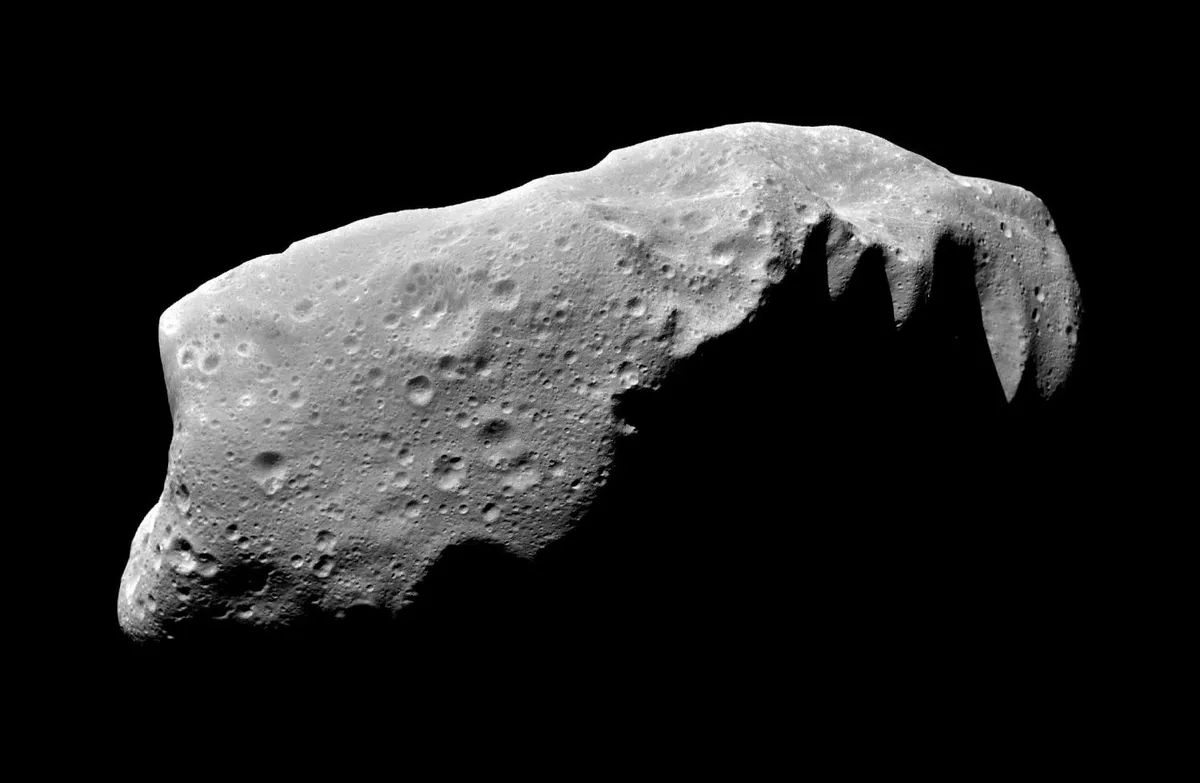Asteroids represent the material left over from the formation of the planets – like crumbs scattered on the cosmic kitchen table – and so their compositions and shapes can offer important insights into the origin of the Solar System. But the asteroids we see today have also had to make it through billions of years of history since then, and all the collisions of varying intensities that that entails.
Just like our own Moon, the surface of asteroids are pock-marked with craters within craters, and larger impacts can catastrophically break up these objects.
All asteroids smaller than about 50km in diameter are the result of fragmentation of a larger parent body. But even smaller-scale, sub-catastrophic collisions can greatly alter the overall structure of an asteroid without breaking it up completely.
Read more about asteroids:
- Asteroid found in exile in outer Solar System
- OSIRIS-REx discovers water on asteroid Bennu
- 'Asteroid' spotted from beyond Solar System
In this sense then, properties of asteroids – such as their shape, interior structure and spin rates – are largely determined by the last large impact they’ve been in, so they could offer a record of the collisional history of the Solar System.
One particular category of asteroids are the contact binaries, which look like two blobs stuck together – almost like a space peanut.
The average impact velocity in the asteroid belt is around 18,000km/h, and so encounters that are gentle enough to simply merge the two colliding bodies are exceedingly rare.
Contact binaries are pretty common within the asteroid population, so what is the most likely process for them to have formed?

Martin Jutzi, at the University of Bern, Switzerland, has been exploring this by running computer simulations of colliding space rocks.
He calculated how impacting bodies deform, fragment and then gravitationally re-coalesce after collisions, treating asteroids as ‘rubble piles’, as this is the internal structure that most asteroids are thought to have.
The asteroids varied in size from a few hundred metres to a few kilometres across.
He found that many of these sub-catastrophic impacts lead to a splitting of the rotating, elongated target asteroid into two components.
But these remain gravitationally bound to each other and re-merge within a day or two to form a contact binary.
lot of the dusty material ejected off in the original collision also falls back and re-accretes onto the newly formed binary.
This ejecta doesn’t uniformly re-coat the binary, however, but creates craggy, rough regions mixed with much smoother patches of the original surface.
The resultant two-lobed objects created by Jutzi’s simulated collisions bear a striking similarity to known contact binary asteroids.
For example, the near-Earth asteroid Itokawa, which was studied up close by JAXA’s Hayabusa space probe in 2005, is also characterised by interspersed regions of rough and smooth terrain.
Considering the probabilities of collisions with impactors at different speeds and sizes, Jutzi concludes that such sub-catastrophic collisions are by far the most likely cause behind contact binary asteroids like Itokawa.
This article originally appeared in the January issue of BBC Sky at Night Magazine. Prof Lewis Dartnellis an astrobiologist at the University of Westminster.Lewis Dartnell was reading The shape and structure of small asteroids as a result of sub-catastrophic collisions by Martin Jutzi. Read it online here.
